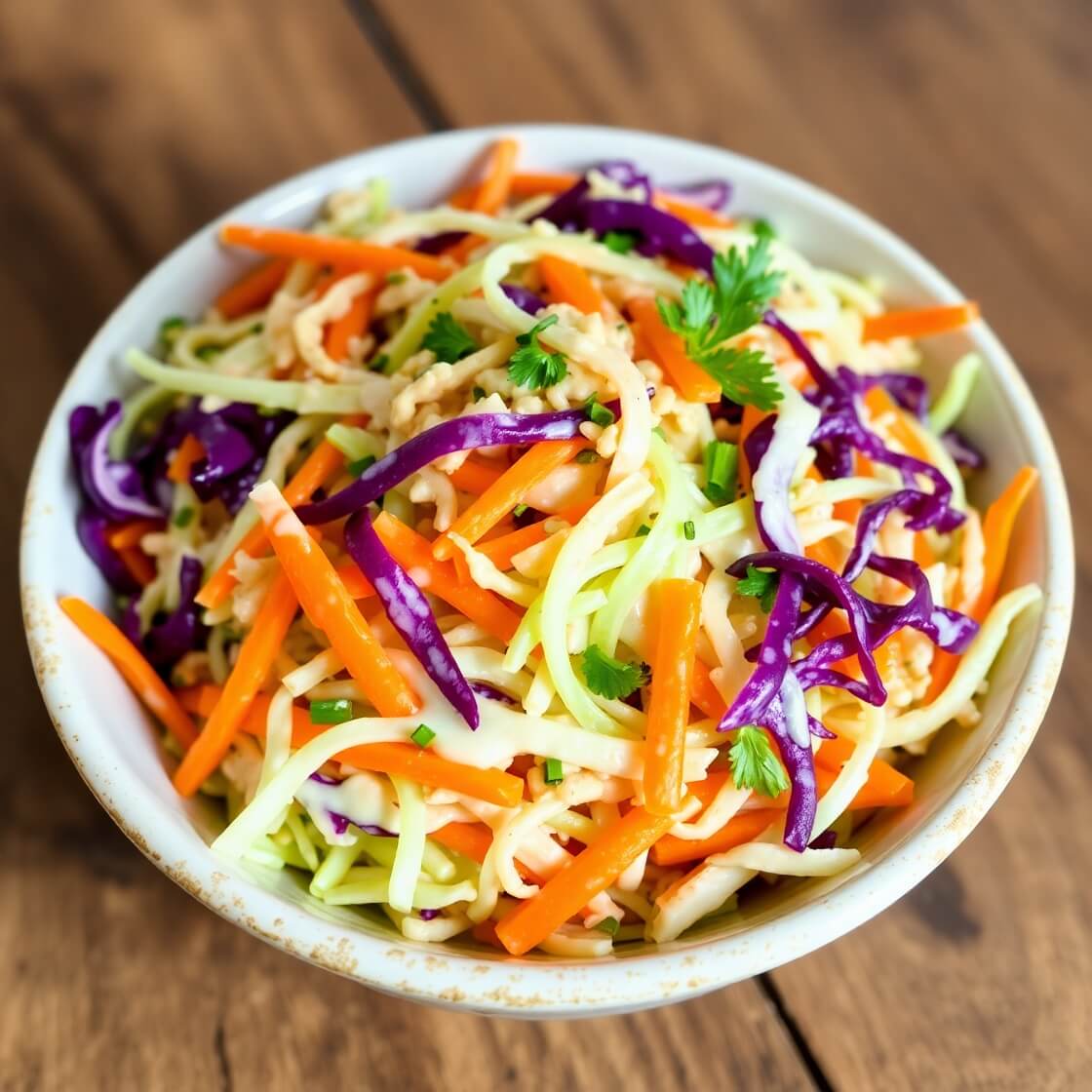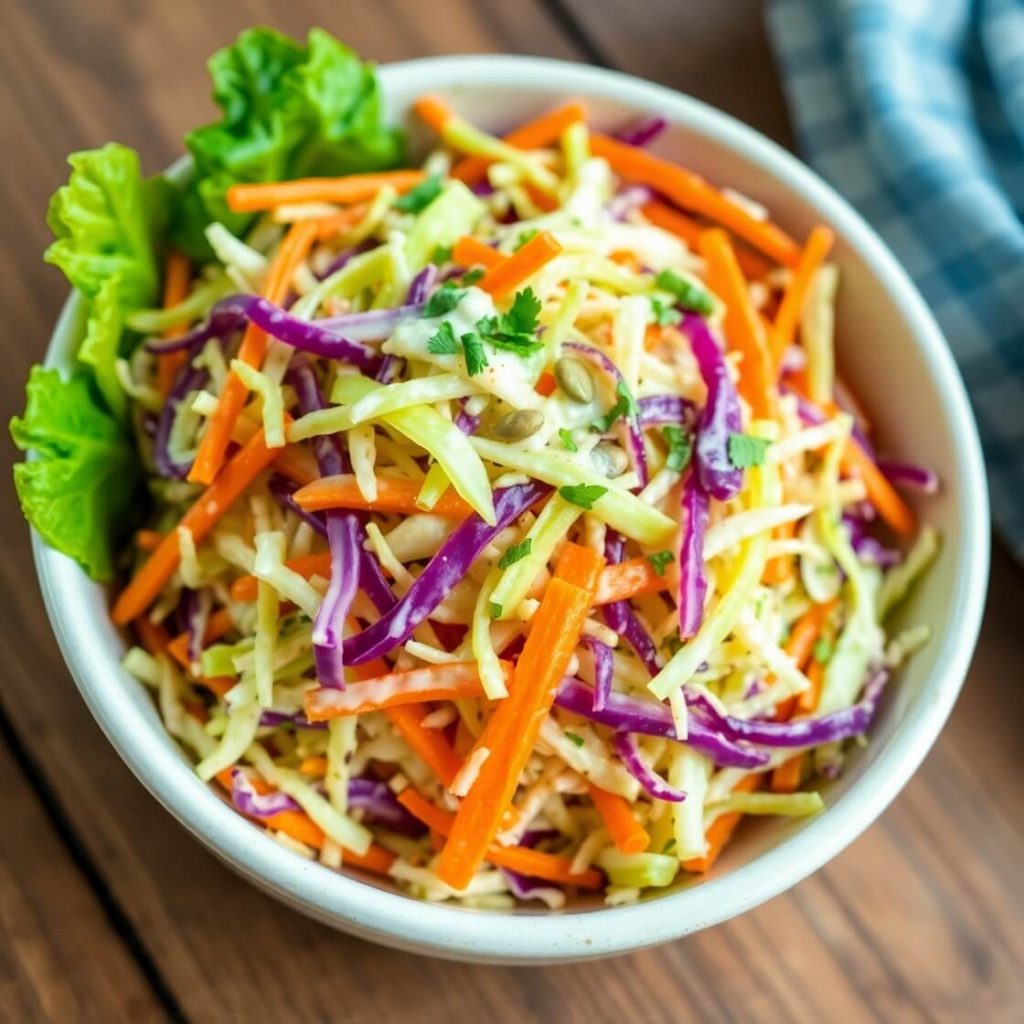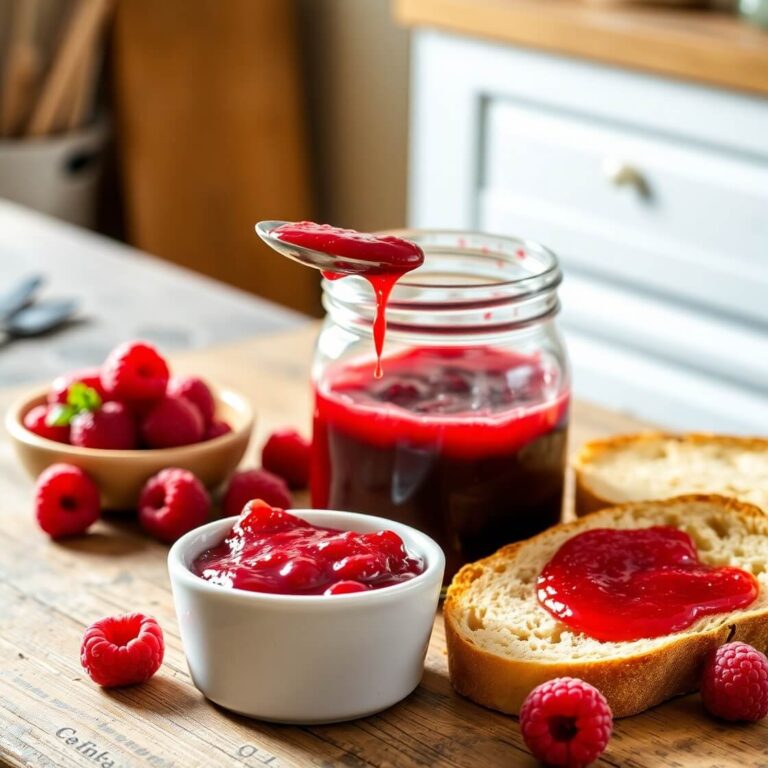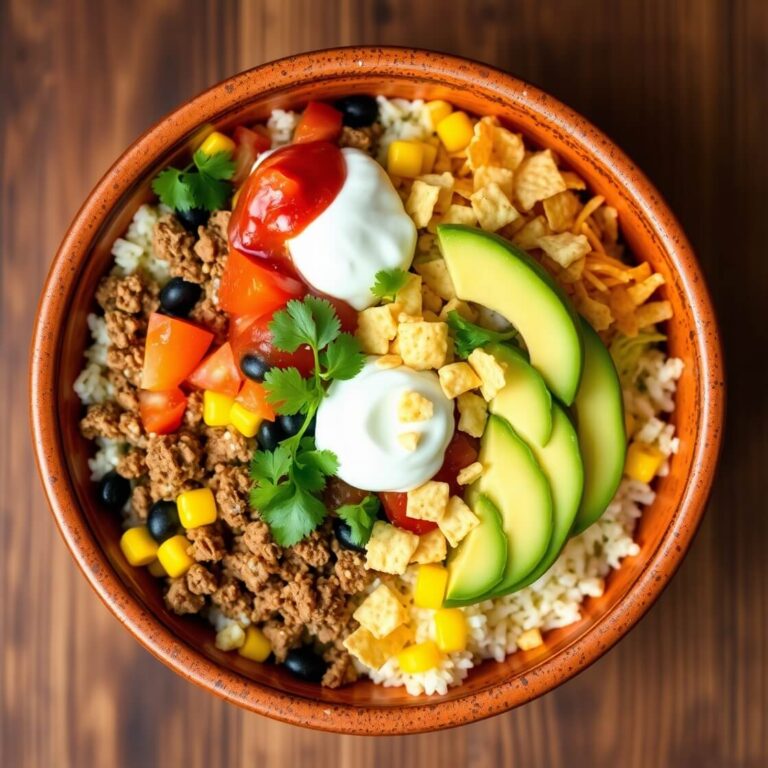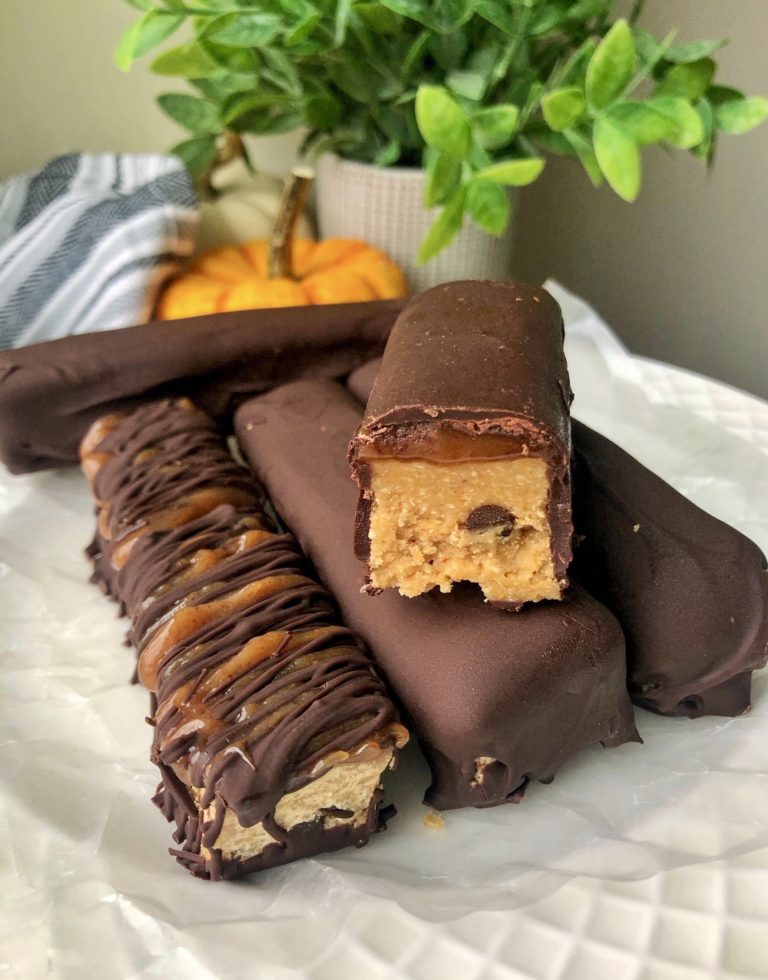There’s something comforting about a bowl of fresh, crisp coleslaw—the kind that balances tangy, creamy, and slightly sweet flavors in every bite. I first fell in love with homemade coleslaw during a summer picnic years ago. A friend brought a vibrant bowl of cabbage, carrots, and a dressing that tasted like sunshine and nostalgia wrapped together. From that moment, I knew I had to recreate that magic in my own kitchen.
Making coleslaw at home isn’t just about tossing shredded cabbage with dressing—it’s about carefully balancing flavors, textures, and freshness. Unlike store-bought versions that can taste overly sweet or watery, homemade coleslaw is crisp, full of flavor, and infinitely customizable. Whether you’re planning a backyard barbecue, a family gathering, or simply craving a refreshing side dish, this coleslaw is your perfect companion. Stick with me, and I’ll guide you step by step so that your coleslaw comes out perfectly every time.
Why I Love This Recipe
Coleslaw is more than just a side dish—it’s a canvas for creativity and a celebration of freshness. I love this recipe because it’s simple, versatile, and incredibly satisfying. The beauty of this coleslaw lies in the perfect crunch of the cabbage, the subtle sweetness of the carrots, and the creamy dressing that ties it all together.
People make coleslaw because it adds a refreshing contrast to heavier dishes like grilled meats, fried chicken, or sandwiches. Its specialty comes from the delicate balance between tangy and sweet, with a texture that feels both hearty and light. Unlike many recipes that use mayonnaise-heavy dressings, this one strikes the ideal balance, ensuring it never feels too heavy but still indulgent enough to feel like a treat. You’ll notice every bite has layers of flavor that mingle beautifully—the crispness of the cabbage, the hint of sweetness from sugar, and the slight acidity from vinegar or lemon juice. It’s that combination that makes it irresistible.
Ingredients for Homemade Coleslaw
To make a coleslaw that tastes fresh, crisp, and flavorful, you need the right ingredients. Here’s what I always use:
- Cabbage: Green cabbage is classic, but I often mix in purple cabbage for color and a slightly different flavor. Fresh and firm cabbage is key.
- Carrots: Shredded carrots add natural sweetness and a vibrant color contrast.
- Onion (optional): A mild red onion or sweet onion can provide a gentle sharpness without overpowering the salad.
- Mayonnaise: The creamy base of the dressing; use a good-quality mayonnaise for the best flavor.
- Vinegar: Apple cider vinegar or white wine vinegar adds tang and balances the sweetness.
- Sugar or Honey: Just a touch to enhance the flavors, never to overpower.
- Mustard: A spoonful of Dijon or yellow mustard adds depth and a subtle kick.
- Salt and Pepper: To season perfectly.
- Optional Additions: Celery seed, lemon juice, or a dash of hot sauce can elevate the dressing.
The key here is freshness and balance. Each ingredient plays a specific role—the cabbage provides crunch, the carrots add sweetness and color, and the dressing ties everything together harmoniously.
How Much Time Will You Need
The beauty of homemade coleslaw is that it doesn’t demand hours in the kitchen. Here’s a realistic time estimate:
- Prep Time: 20 minutes
- Marinating Time (optional for more flavor): 30 minutes
- Total Time: 50 minutes
While the coleslaw can be enjoyed immediately, letting it sit in the fridge for 30 minutes allows the flavors to meld beautifully, giving a slightly softer, more flavorful result.
How to Make This Homemade Coleslaw
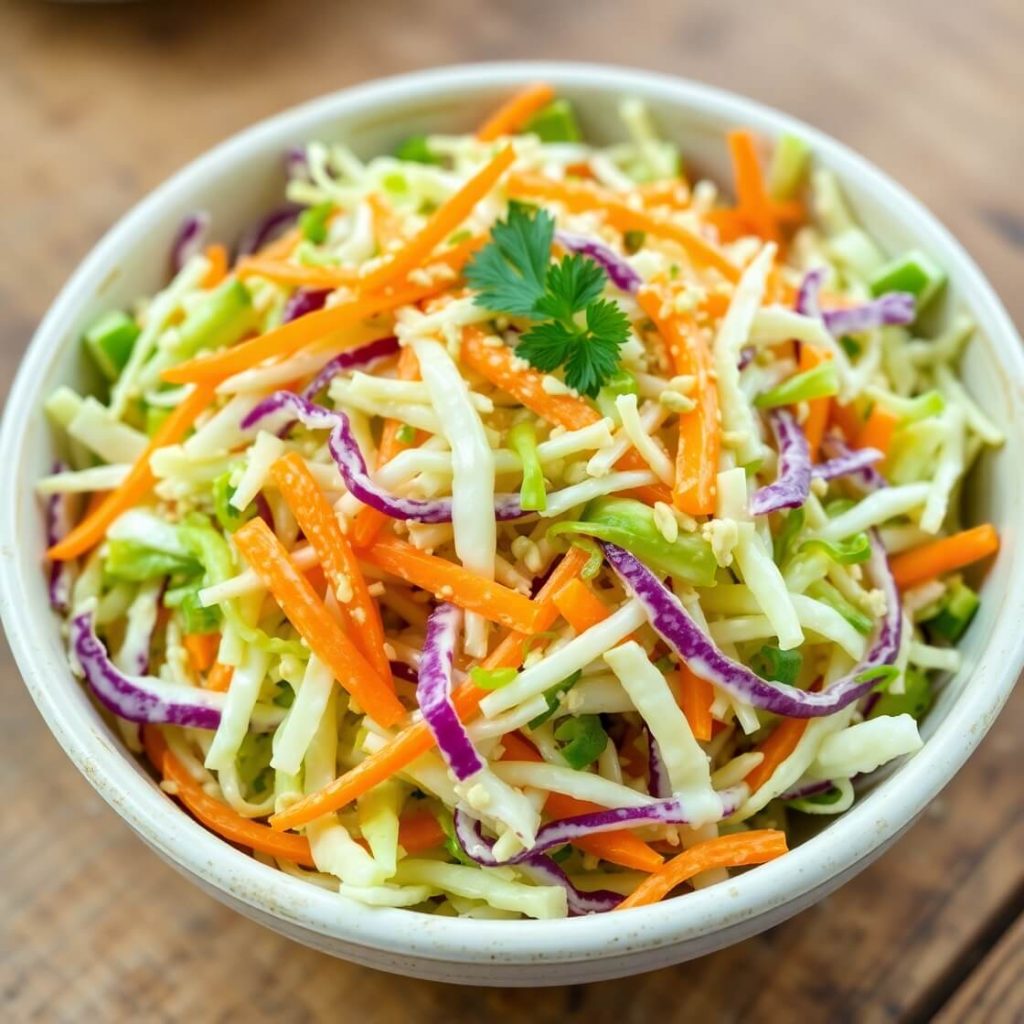
Creating a perfect coleslaw is all about technique and attention to detail. Here’s my step-by-step guide:
Step – 1: Prepare the vegetables. Remove the outer leaves of the cabbage and cut it into quarters. Shred finely using a sharp knife, mandoline, or food processor. Peel and shred the carrots. If using onion, finely dice or slice thinly.
Step – 2: Make the dressing. In a medium bowl, combine mayonnaise, vinegar, sugar (or honey), mustard, salt, and pepper. Whisk until smooth and creamy. Taste and adjust—if it’s too tangy, add a bit more sugar; if too thick, add a small splash of milk or lemon juice.
Step – 3: Combine vegetables and dressing. Place shredded cabbage, carrots, and onion (if using) into a large mixing bowl. Pour the dressing over the top and toss thoroughly. Make sure every piece of cabbage is lightly coated with the creamy dressing.
Step – 4: Chill and marinate. Cover the bowl and refrigerate for at least 30 minutes to let the flavors blend. You can also make it a few hours ahead for a more intense flavor.
Step – 5: Serve and enjoy. Before serving, give it a final toss and taste for seasoning. Add a little extra salt, pepper, or vinegar if needed.
Substitutions
Don’t have a specific ingredient? No problem. Here are some substitutions to make this recipe flexible:
- Mayonnaise: Greek yogurt or sour cream can provide creaminess with a tangy twist.
- Sugar: Maple syrup or agave works well as a natural sweetener.
- Cabbage: Napa cabbage, kale, or even a mix of lettuces can create a different texture and flavor profile.
- Vinegar: Lemon or lime juice can replace vinegar for a fresher citrusy taste.
- Carrots: Shredded zucchini or bell pepper can add a different kind of crunch and color.
These alternatives can personalize the coleslaw to your taste, dietary needs, or what’s available in your kitchen.
Best Side Dishes for Homemade Coleslaw
Coleslaw pairs beautifully with a variety of meals, adding freshness and crunch. Some of my favorite side pairings include:
- Grilled or fried chicken
- Pulled pork sandwiches
- Fish tacos
These combinations allow the creamy, tangy coleslaw to complement richer flavors, creating a perfect balance on your plate.
Serving and Presentation Tips
Serving coleslaw is more than just scooping it onto a plate. Presentation can make it look as appetizing as it tastes. I like to serve mine in a shallow, wide bowl so the colorful layers of cabbage, carrots, and dressing are visible. Sprinkle a few extra carrot shreds or a pinch of celery seeds on top for visual appeal.
If you’re serving it as part of a meal, consider small individual portions in ramekins or mini bowls. This makes it feel special, even at casual family dinners. A drizzle of extra dressing around the edge of the plate can create a restaurant-style look without any extra fuss.
Fresh herbs like chopped parsley or chives also add a burst of color and a hint of freshness. Remember, we eat with our eyes first, so making it visually inviting will enhance the whole experience.
Tips and Tricks to Make This Recipe Even Better
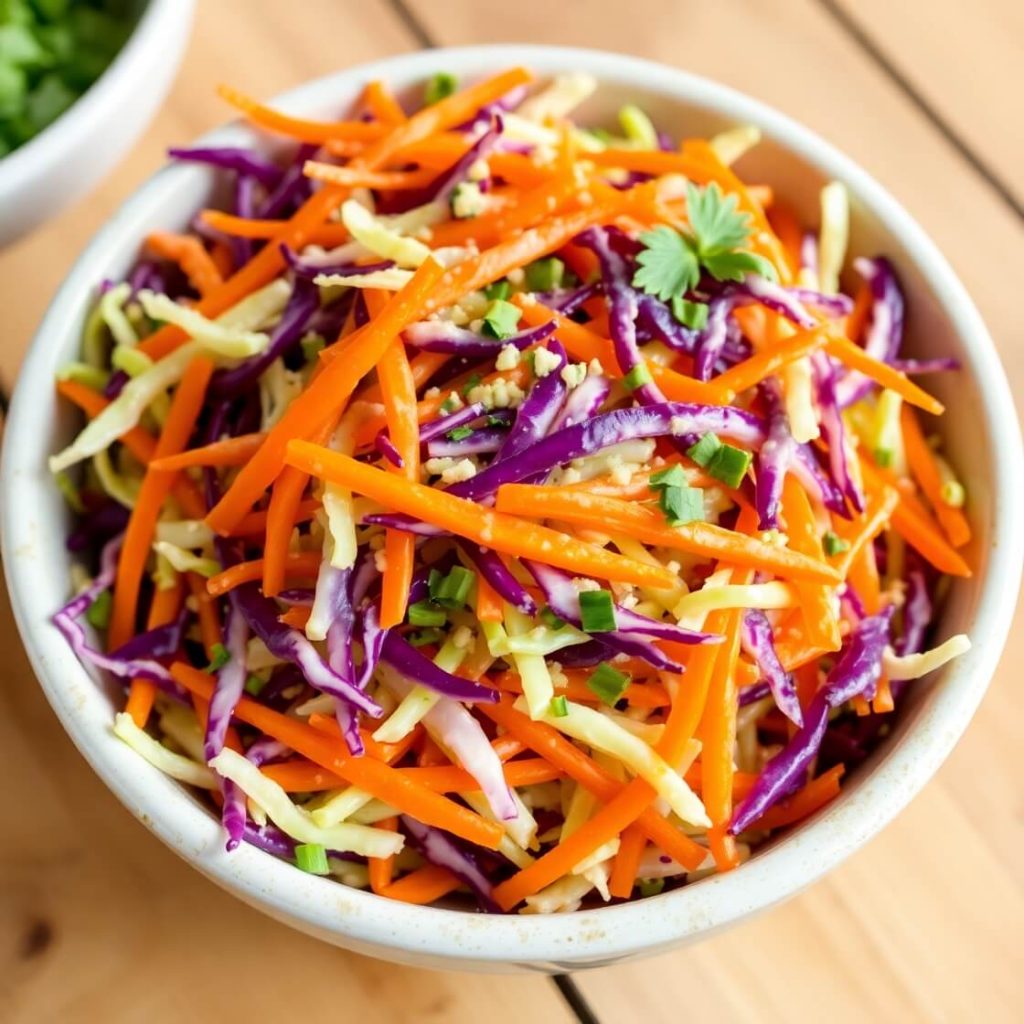
Homemade coleslaw is versatile, but a few little tricks can elevate it from good to unforgettable.
- Shred thinly: Thinner cabbage shreds absorb the dressing better, creating a more cohesive texture.
- Massage the cabbage: Lightly rubbing the cabbage with a pinch of salt before adding the dressing softens it slightly, making it less fibrous and easier to eat.
- Balance the flavors: Taste the dressing before combining with vegetables. Adjust acidity or sweetness gradually to avoid overpowering the vegetables.
- Rest for flavor: Letting coleslaw sit for at least 30 minutes in the fridge allows the flavors to meld. Overnight is even better if you want a more tender texture.
- Add crunch later: If you like extra texture, add toasted nuts or seeds (like sunflower seeds) right before serving so they don’t get soggy.
These small adjustments make a big difference, ensuring your coleslaw has the perfect crunch, tang, and creaminess.
Common Mistakes to Avoid
Even with a simple recipe, there are a few pitfalls to watch out for:
- Overdressing: Too much dressing can make the coleslaw soggy. Start with less and add more gradually.
- Using old vegetables: Fresh cabbage and carrots are key. Wilted vegetables will ruin the texture.
- Skipping seasoning: Dressing without salt and pepper tastes flat. Don’t forget to taste and adjust.
- Shredding too coarsely: Large chunks won’t absorb dressing properly and can make the salad less cohesive.
- Serving too early: Coleslaw tastes best after chilling. Immediate serving can leave it tasting plain or unevenly flavored.
By avoiding these common mistakes, you ensure a crisp, flavorful coleslaw every time.
How to Store It
Coleslaw is best enjoyed fresh, but it keeps well if stored properly:
- Refrigeration: Store in an airtight container in the fridge for up to 3 days.
- Separate dressing (optional): If you plan to store it for a longer time, keep the dressing separate and toss just before serving to maintain crispness.
- Avoid freezing: Freezing coleslaw isn’t recommended; it will become watery and lose its texture.
Proper storage keeps your coleslaw tasting fresh and prevents sogginess.
FAQ
Can I make coleslaw ahead of time?
Yes! Coleslaw can be made a few hours or even the night before. Just keep it refrigerated. For extra crunch, add any delicate toppings like nuts or herbs right before serving.
Can I make coleslaw without mayonnaise?
Absolutely! Greek yogurt or sour cream works wonderfully as a lighter alternative, giving a tangy flavor while keeping it creamy.
How can I make coleslaw less sweet?
Reduce the sugar or honey in the dressing and add a bit more vinegar or lemon juice. Taste and adjust gradually.
Can I add other vegetables?
Yes! Bell peppers, celery, and even shredded zucchini work well. Just make sure to balance the dressing accordingly.
How do I keep coleslaw crunchy?
Shred thinly, lightly salt and massage the cabbage, and store it properly in the fridge. Add delicate ingredients last minute.
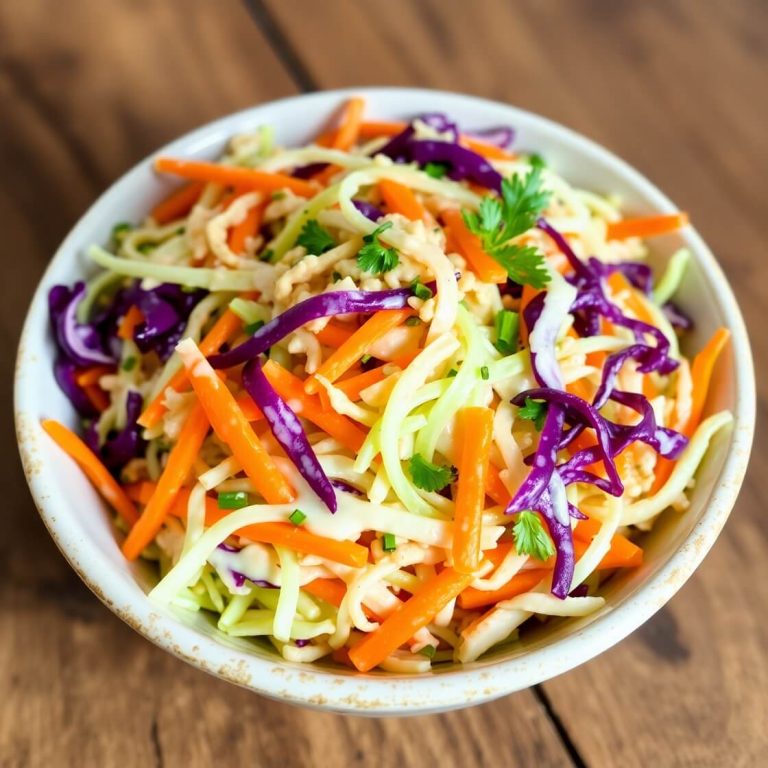
Homemade Coleslaw
A fresh, crisp, and tangy coleslaw that’s perfect as a side for barbecues, sandwiches, or fried chicken. This recipe balances creamy dressing, crunchy cabbage, and natural sweetness from carrots. It’s quick to make, easy to customize, and guaranteed to be a crowd-pleaser. The vibrant colors make it as visually appealing as it is delicious, and it’s ideal for summer picnics, holiday gatherings, or simple family dinners. Every bite offers a perfect blend of crunch, tang, and creaminess that you’ll want to enjoy again and again.
- Total Time: 50 minutes (including chilling)
- Yield: 6-8
Ingredients
- 1 medium green cabbage, finely shredded
- 1/2 medium purple cabbage, finely shredded (optional for color)
- 2 large carrots, shredded
- 1 small onion, thinly sliced (optional)
- 3/4 cup mayonnaise
- 2 tablespoons apple cider vinegar
- 1 tablespoon sugar or honey
- 1 teaspoon Dijon mustard
- Salt and black pepper, to taste
- Optional: celery seed, lemon juice, hot sauce, fresh herbs
Instructions
- Shred the cabbage and carrots; slice the onion if using.
- In a bowl, whisk together mayonnaise, vinegar, sugar, mustard, salt, and pepper until smooth.
- Combine vegetables and dressing; toss to coat evenly.
- Cover and refrigerate for at least 30 minutes.
- Toss again before serving and adjust seasoning if needed.
- Optional: Garnish with extra carrot shreds, herbs, or celery seeds.
Notes
- Use fresh, firm vegetables for the best crunch.
- Adjust sweetness and acidity according to taste.
- Add delicate toppings just before serving to maintain texture.
- Prep Time: 20 minutes
- Cook Time: 0 minutes
- Category: Side Dish
- Method: No-cook
- Cuisine: American
- Diet: Vegetarian
Nutrition
- Serving Size: 6-8
- Calories: 180
- Sugar: 5g
- Sodium: 180mg
- Fat: 14g
- Saturated Fat: 2g
- Unsaturated Fat: 10g
- Trans Fat: 0g
- Carbohydrates: 12g
- Fiber: 3g
- Protein: 2g
- Cholesterol: 5mg

